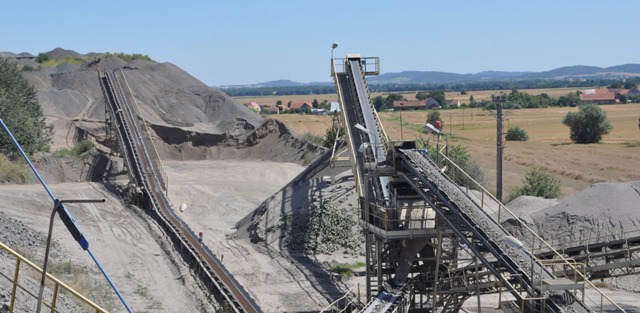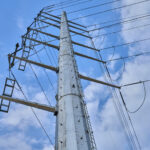Cement Sector: Profits Rain on Demand Revival
When it comes to India, the infrastructure sector never sleeps. Even during the lockdown and later on, the industry was up and going. This has given renewed impetus to the realty and construction sector where cement is extensive consumed. In coming days infra projects are going to increase, and with it cement consumption too will follow suit
The consumption of cement is an important indicator to judge the economic progress of the country. More the consumption of cement, the better the economic health of the country. Like all other sectors, the cement sector too was badly battered by Covid-19 induced lockdown, but it bounced back rather quickly than most other sectors. “With the lockdown continuing for most of April 2020, the production significantly declined by 86% YoY and 84% MoM to a meagre 4 million MT. With some relaxation in the lockdown rules by the Government, the pent-up demand following complete supply stoppage and the trigger to complete pending works before the onset of the monsoons has supported some demand revival in May-June 2020. The production recovered to 22.2 million MT in May 2020 and to 26.3 million MT in June 2020. While the production improved by 17.4% MoM, it has still been lower by 6.8% on a YoY basis. In Q1 FY2021, production has been lower by 38.3% on a YoY basis,” says Anupama Reddy, Assistant Vice President, ICRA.
According to a recent report by Care Ratings, cement production within the country rose by 13.3% in March 2021 as compared with the month of February 2021 and increased on a yearly basis by 32.5% as compared with March 2020. This growth was primarily on the back of pick-up in infrastructure activities particularly in theresidential real estate segment, including affordable housing.Also,the construction activities usually peak in the March end quarter just before the start of the monsoon season. However, on a cumulative basis, production fell by 12% in FY21 as compared with 0.9% decline for the same period in FY20 and a growth of 13.1% FY19.The nation wide lockdown imposed in the last week of March,2020 and the consequent challenges witnessed by the industry such as decline in consumer demand, reverse migration, staggered shifts andbottlenecksinlogistics inH1-FY21 led to thisoverall yearly fall inproduction.
FY2021 Results:
Lets take a quick glance at how the cement companies preformed in Q4. UltraTech Cement reported a 45.2 percent decline in consolidated net profit to Rs 1,774.13 crore for the fourth quarter ended March 2021 on account of reversal of deferred tax liabilities. The company had posted a net profit of Rs 3,236.85 crore in the January-March quarter a year ago. "One time gain on account of reversal of deferred tax liabilities of Rs 2,112 crore in consolidated performance and Rs 1,805 crore in standalone performance for FY20 has been eliminated to derive the Normalised PAT for FY20 for a correct comparison with FY21," UltraTech said in a post-earnings statement.
India Cements in a regulatory filing reported a consolidated net profit of Rs 43.97 crore for the fourth quarter ended March 2021, on the back of strong sales. The company had posted a consolidated net loss of Rs 11.76 crore in the same quarter previous fiscal. Its consolidated revenue from operations in the fourth quarter stood at Rs 1,472.45 crore as compared to Rs 1,176.40 crore in the year-ago period.
Orient Cement net profit jumped over two-fold jump to Rs 99.87 crore in the fourth quarter ended March 2021. It had posted a net profit of Rs 44.06 crore in the January-March quarter a year ago. Its revenue from operation rose 27.06 per cent to Rs 831.61 crore during the quarter under review as against Rs 654.52 crore in the corresponding period a year earlier.
In a regulatory filing JK Lakshmi Cement reported a 61.34 percent increase in consolidated net profit to Rs 159.13 crore for the fourth quarter ended March 2021, helped by higher volumes and improved cost efficiencies.The company had posted a profit of Rs 98.63 crore in the January-March period a year ago. The Revenue from operations rose 25.22 percent to Rs 1,424.32 crore from Rs 1,137.47 crore in the year-ago quarter.
JK Cement reported 38.07% year-on-year rise in consolidated net revenues for fourth quarter ended March 2021 at Rs 2,134.15crore. On a sequential basis, net sales revenues were up 16.45% compared to total revenues in the Dec-20 quarter at Rs 1,832.71 crore. The company’s net profits were up 32.75% at Rs 215.91 crore on the back of higher sales leading to a sharp improvement in the absorption of fixed costs. However, the company saw profits growing slower than revenues due to a sharp spike in raw material costs, power costs, fuel costs and freight and forwarding costs on yoy basis.
Shree Cement, in a regulatory filing, reported a 49% jump in consolidated net profit after tax at Rs 799.79 crore in the last quarter of FY21 as against Rs 536.65 crore in the same period last year. The company clocked 23.12% year-on-year growth in consolidated sales revenues for the March-2021 quarter at Rs. 4,204.88 crore. In the sequential quarter comparison, Shree Cements reported 18.74% growth over revenues of Rs. 3,541.38-crore in Dec-20 quarter. Net profit of Shree Digvijay Cement rose 18.39% to Rs 27.43 crore in the quarter ended March 2021 as against Rs 23.17 crore during the previous quarter ended March 2020. Sales rose 36.29% to Rs 174.86 crore in the quarter ended March 2021 as against Rs 128.30 crore during the previous quarter ended March 2020.
In a regulatory filing, The Ramco Cements has reported 51.1 per cent rise in consolidated net profit at Rs 215.92 crore for the fourth quarter ended March, 2021. It had posted a net profit of Rs 142.90 crore in January-March 2019-20.
Increasing Market Share: Expansion and Acquisition
Covid-19 has badly battered the economy world over. The government is putting his money and hope on Infrastructure sector. Recently, the government has set up a Rs 20,000 crore Development Finance Institution (DFI) with a view to mobilise Rs 111 lakh crore required for funding of the ambitious national infrastructure pipeline. The government has set an ambitious target of becoming USD 5 trillion economy and a global economic powerhouse by 2024-25. To achieve this gigantic target requires huge infrastructure development and for that huge amount of cement is required. Never to lose an opportunity, cement manufacturers are all set to expand their capacity to cater to the ever-increasing demand. Penna Cement Industries and Nuvoco Vistas Corporation will be coming up with their Initial Public Offer (IPO). Peena Cement has filed a draft red herring prospectus (DRHP) with Securities and Exchange Board of India (Sebi) to raise nearly Rs. 1,550 crore. Part of the money will be used pay debts and the rest will be used for funding of capital expenditure requirements towards the KP Line II projects, upgrading the raw grinding and cement mill at Talaricheruvu, towards setting up the WHR Plant at Talaricheruvu and or setting up the WHR Plant at Tandur.
UltraTech Cement has announced an investment of Rs. 5,477 crore towards increasing its capacity by 12.8 million tonne per annum with a mix of brownfield and greenfield expansion. The additional capacity will be created in the east, central and north regions markets of the country. This expansion includes the existing approval for the cement plant at Pali in Rajasthan, in addition to the company’s 6.7 MTPA capacity expansion currently underway in Uttar Pradesh, Odisha, Bihar and West Bengal. Ambuja Cement's clinker and cement plants in Rajasthan are scheduled to be commissioned in June quarter of calendar year 2021. JK Cement is setting up an integrated greenfield grey cement plant of four million tonnes per annum by its wholly-owned subsidiary Jaykaycem (Central) at Panna, Madhya Pradesh. The Ramco Cements plans to increase its capacity by 20 MTPA by the first quarter of FY2022. The company expects to commission the clinkering unit of 1.5 MTPA along with 9 MW waste heat recovery system (WHRS) in Jayanthipuram and 2.25 MTPA clinkering unit in Kurnool during Q1FY22 and the 1-MTPA cement grinding facility, 12 MW of WHRS and 18MW of thermal power plant in Kurnool are expected to be commissioned by FY2022.
Dalmia Cement (Bharat) has announced a capacity addition of 2.3 million tonne at its Bengal Cement Works (BCW) unit in West Bengal at an investment of Rs. 360 crore. This addition will increase BCW unit’s overall capacity to 4 million tonne per annum, making it the largest cement plant in West Bengal. Shiva Cement, a subsidiary of JSW Cement, will invest over Rs. 1,500 crore to set up a clinker unit at Sundergarh in Odisha. The plant will have an annual capacity of 1.36 million tonne. Apart from the clinker unit the company will also set up 1 MTPA grinding unit; 8 MW waste heat recovery power plant; 4 MTPA crushing plants at its dolomite and limestone mines along with a 10-km long overland belt conveyor to transport limestone from the mines to the manufacturing plant and an own railway siding with 12 km long railway track for seamless transportation of finished goods to the market. While its parent company JSW Cement plans to raise equity capital of $200 million to fund a Rs 3,600-crore expansion.
Sustainability: Cement goes green
It is a known fact that cement production releases huge amount of carbon dioxide which is responsible for environmental degradation. Cement companies are taking various steps to reduce green house gas emissions. Cement companies are investing in waste heat recovery plant and carbon capture technologies to reduce carbon dioxide emission from their plants. Prism Cement has established a 12MW waste heat recovery (WHR) plant and 10MW solar power plant at its plant in Satna, Madhya Pradesh. Isgec Heavy Engineering is setting up Waste Heat Recovery Boilers for Shree Cement. These Boilers are to be set up at their Raipur unit and will be of 2 types, a PH Boiler to be installed at the pre-heater exhaust, and an AQC Boiler to be installed at the cooler exhaust from the 10500 TPD kiln. , Ambuja Cements and ACC are investing Rs. 780 crores to set up waste heat recovery system based power plants at their six cement plants across India. Ramco Cements has commissioned a 9MW waste heat recovery power plant at its 3.7Mt/yr Jayanthipuram, Andhra Pradesh cement plant and is in the process of installing two more 9 MW waste heat recovery power generating plants. On commissioning of these waste heat recovery systems, the Company’s aggregate capacity of waste heat recovery plants would be 39.15 MW. UltraTech Cement has lined up investment worth Rs 1,500 crore in FY21 in multiple initiatives, which also includes setting up of 66 MW of waste heat recovery systems. Shiva Cements will be commissioning 8MW waste heat recovery unit and JK Lakshmi Cement will be commissioning its waste heat recovery unit III Project at Sirohi this year. Mangalam Cement has fully commissioned an 11MW waste heat recovery (WHR) unit at its integrated Morak plant in Rajasthan.
Robust Growth Expected
Cement plays an important role in the growth of the infrastructure development of the country. Cement demand is cyclic and it fluctuates depending upon seasons. In monsoon cement consumption is less as construction activities are fewer while in summer season as construction activities increases, cement consumption too follow suit. This year the India Meteorological Department has predicted ‘Normal Monsoon’. This will give increase impetus for demand from rural parts of India once the monsoon gets over. The government’s increasing thrust on infrastructure development further increase demand for cement from realty, construction and infrastructure sector. The Union Budget 2021-22 has allocated Rs. 1,18,101 crore, the highest ever outlay, for Ministry of Road Transport and Highways. A large amount of money has been earmarked for ongoing and new economic corridors/expressways, and Rs. 1,10,055 crore have been allocated to the Railways, of which Rs. 1,07,100 crore is for capital expenditure with a promise to complete 100% electrification of broad gauge routes by December 2023. The government has extended tax holiday for affordable housing projects and has taken various initiatives for the housing sector.
With plenty of projects the demand is going to gallop, the only worrying factor is extended lockdown and the fear of looming third wave of Covid-19.
















